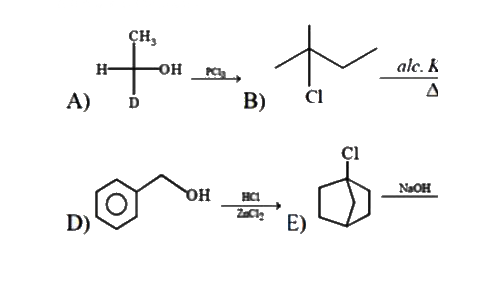Explain why nucleophilic substitution reactions are not very common in phenols ?
Resonance is an important factor in phenols. During resonance -OH group in phenol gives its electrons to the benzene ring. As a result of this, the electron density on benzene ring is very high. This increased electron density repels nucleophiles.
Therefore, nucleophiles cannot attack the benzene ring and phenols usually do not give nucleophilic substitution reaction.

Related Playlists
Similar Questions
Explain why nucleophilic substitution reactions rae not very common in phenols.
View SolutionWhat are nucleophilic substitution reactions ? Give an example.
View SolutionExplain why are electrophilic substitution reactions the most characteristic reactions of benzene?
View SolutionWhich one is a nucleophilic substitution reaction among the following ?
View SolutionConsider the following anions.

When attached to sp -hybridized carbon, their leaving group ability in nucleophilic substitution reaction decreases in the order :View SolutionRate of substitution reaction in phenol is :
View SolutionIdentify number of nucleophilic substitution reactions in the given reactions?
 View Solution
View SolutionAryl halides are practically inert toward nucleophilic substitution reactions . The reasons for this fact are
(a) Because C -X bond has partial double bond character due to conjugation bewteen lone pair of X and π electrons of aromatic ring .
(b) No S N 1 reaction beacuase aryl carbocations are unstable
(c) No S N 2 reaction because aromatic π electron cloud do not allow backside attack of N u −
(d) Product obtained through nucleophilic substitution reactions are non aromaticView SolutionChlorobenzene is extremely less reactive towards nucleophilic substitution reaction. Give two reasons for the same.
View SolutionAryl halides are less reactive towards nucleophilic substitution reaction as compared to alkyl halides due to
View Solution


